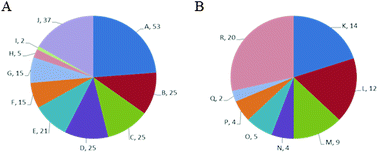Revelation of molecular basis for chromium toxicity by phenotypes of Saccharomyces cerevisiae gene deletion mutants†
Abstract
Chromium toxicity is increasingly relevant to living organisms such as humans, due to the environmental contamination of chromium and the application of stainless steel-based medical devices like hip prostheses. Despite the investigations in past years, the molecular details for chromium toxicity remain to be delineated. In this study, we seek to gain insights into the molecular aspects of chromium toxicity by screening a genome-wide deletion set of individual genes in Saccharomyces cerevisiae against hexavalent chromium [Cr(VI)] using chromium trioxide. From the primary data collected in this study, two lists of deletion mutants in response to Cr(VI) exposure were obtained, one for the sensitive phenotype and the other for the resistant phenotype. The functional analysis of the genes corresponding to the sensitive mutants reveals the key features of Cr(VI) toxicity, which include genotoxicity, protein damage, disruption of energy and sulfur metabolisms. DNA repair, ubiquitination-mediated protein degradation, iron homeostasis and growth attenuation are the intrinsic facets of the cell's detoxification mechanisms. Protein kinase CK2 is, for the first time, found to be involved in regulating chromium toxicity by reducing the uptake of Cr(VI). Taken together, the findings provide meaningful details into the basic understanding of chromium toxicity in terms of its uptake, modes of action, cellular detoxification and molecular regulatory mechanisms.


 Please wait while we load your content...
Please wait while we load your content...